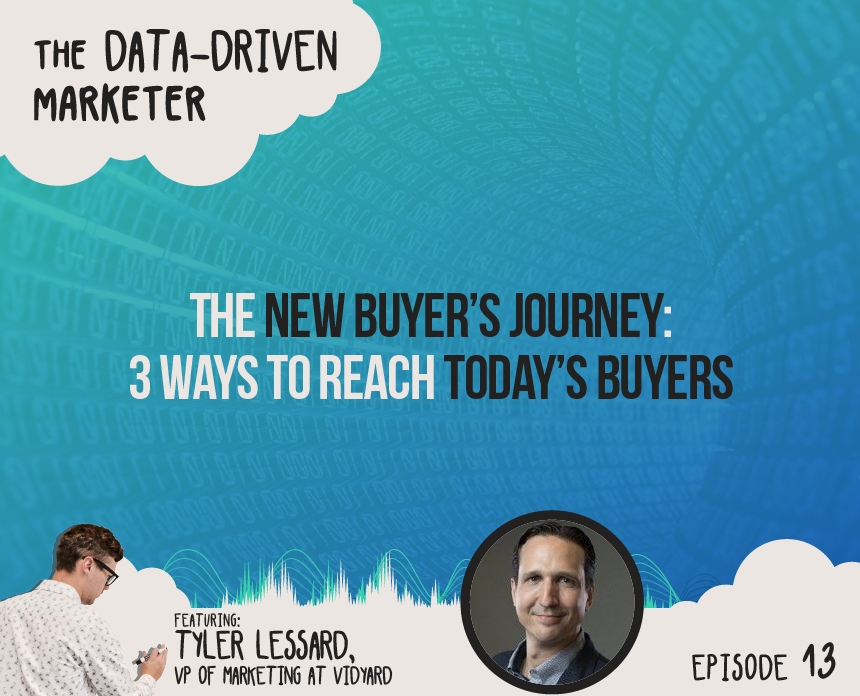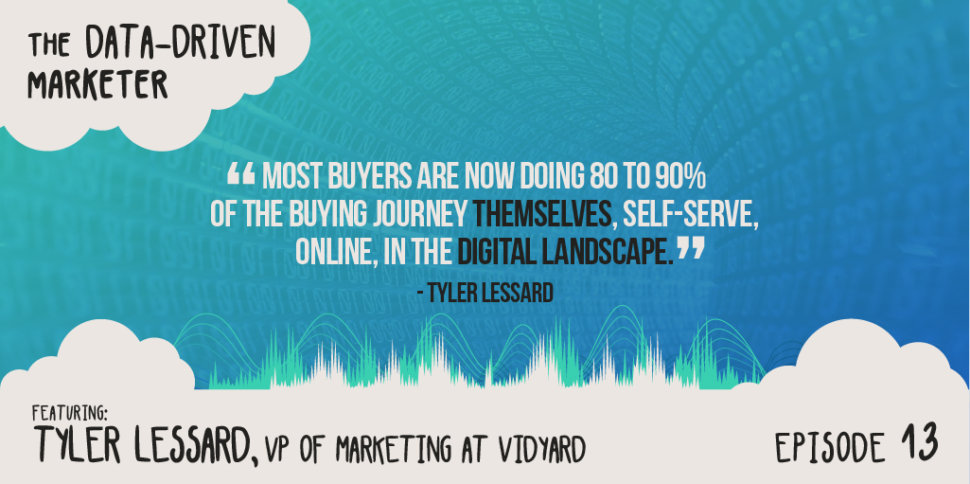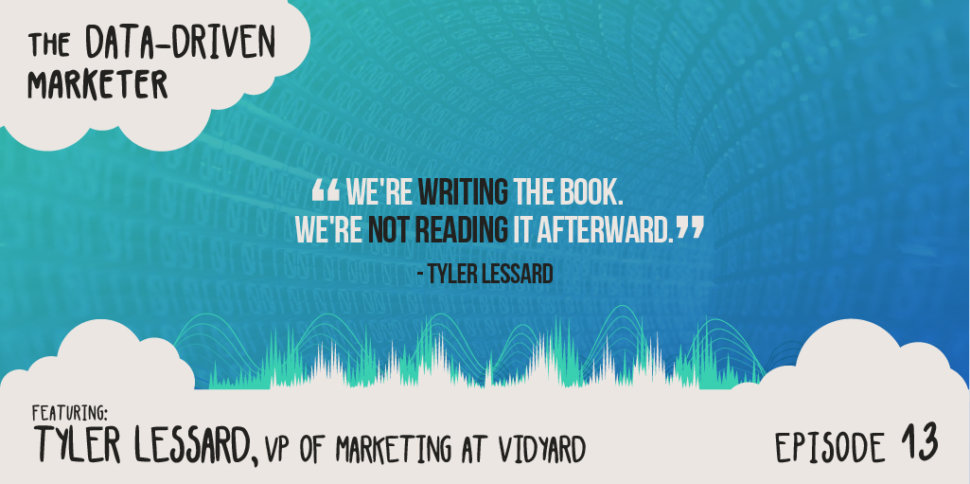
The new buyer’s journey: 3 ways to reach today’s buyers
Maybe you’re in the midst of creating your own category, or maybe you’re in a hotly contested market. Either way, you’ve probably figured out that today’s buyers have changed. They’re smarter, more researched, and by the time they call a sales rep, they’ve probably already decided on what they’re going to purchase. Welcome to the new buyer’s journey.
On a recent episode of the Data-Driven Marketer podcast, we invited Tyler Lessard, the VP of Marketing at Vidyard, to tell us how he’s helped create a new consumer’s/buyer’s journey and dominate the video tech space for marketing and sales teams.
Here are the highlights from that interview:
Buyers now go through 80 – 90% of the buying journey themselves

Buyers have changed. 10 to 15 years ago, they’d do a little research, then call a sales rep to help guide them to the best decision.
Now, by the time a sales rep receives a call, up to 90% of the buyer’s journey is already completed. Buyers now have more access than ever to information like reviews, which make it easy to do their own research to determine their options.
In response, marketers must now go after buyers by reaching them during their digital research.
Tyler’s well aware of this need, and he’s attacked this problem proactively. In his words,
“We don’t try to follow the conversation—we want to lead the conversation.”
Are they leading?
I’d say so—and in 2 different categories.
One, they’ve created a suite of vid tech tools for marketers.
Secondly, they’ve created a new category with their unique product for sales teams. Using Vidyard, sales teams can easily send 1-minute videos to their prospects to help engage with them on a human level.
So, how has Tyler ensured Vidyard’s continued dominance in both these areas? Here’s a little insight into their approach:
There’s no silver bullet for marketers to dominate a category
There’s no silver bullet to conquering, creating, or dominating a category. You’ll need to use a multi-pronged strategy to determine what you can do to lead your category proactively. Your mission is simple: reach buyers as they research you (and your competitors). Be an advisor, and help lead them through the buyer’s journey.
Here’s how Tyler’s team has been doing that:
1) Strong content marketing strategy
From day one, Vidyard has employed dedicated content marketers and video producers who consistently create and share high-value content.
Here’s the clincher: Their content is not all about Vidyard. Their content helps elevate the entire space. For Vidyard, that means creating content that addresses the new buyer’s journey by talking about how marketing and sales teams can use video to accelerate their sales cycles.
2) Doubling-down on key partnerships
Tyler’s helped to develop and maintain key partnerships with companies like Marketo and Hubspot—companies with a prebuilt core infrastructure for marketing and sales teams. Tyler’s doubled-down on these key partnerships, as it’s given Vidyard access to those sales forces as “feet on the street.”
“They’re all out there evangelizing our product, because we’ve partnered with them,” he said.
Your marketing approach may vary.
As Tyler said—your specific marketing mix will vary, but both of the above elements will likely be a part of that mix.
Of course, when you’re using a multi-pronged marketing approach, an obvious question is:
How do you decide which programs to continue to invest in, and which to let go?
It’s not an exact science, according to Tyler, but he did give us an inside peek into how they’re doing that at Vidyard, and it all starts with determining attribution:
A few tips on attribution
In their earlier days—Vidyard’s marketing team focused on new inquiries and top-of-funnel attribution in their tracking. So, they used either first or last touch attribution.
But they soon realized that as a content organization, first and last touch attribution models weren’t accurately tracking their multi-touch approach.

This is a particularly important issue for B2B companies with long and complex sales cycles. if your sales cycle spans several months, or even years, measuring only the first or last touch won’t give you the full picture.
They now use a weighted attribution mode, to understand which emails, which content, which touchpoints, deliver the most impact. And not just on lead gen, but on actual revenue.
Vidyard’s 3 attribution models
Before we dive into Vidyard’s specific attribution models, it’s important to echo what Tyler himself stressed: these models give his marketing team directional insights only. His team doesn’t consider these models as absolutes.
With that in mind, here are the different models his team uses to determine attribution and where they should invest their marketing resources:
- First touch model
- Last touch model
- U-shaped attribution model called a “40-20-40”: If a campaign was the first touch, it receives 40% of the pipeline or revenue weighting. If it was the last touch, it’s also assigned 40%. All the touches in the middle receive a total of 20%, divided evenly amongst each.
Again, these models don’t give a perfect picture. But between the 3 of them, the Vidyard team receives significant directional insights. They also help point out outliers.
There’s no ‘Thou Shalt / Thou Shalt Not’
The important thing to remember is that no single model can tell you “thou shalt cut this, and thou shalt spend more on that.”
To learn more about the new consumer’s/buyer’s journey, check out the podcast link at the top of this post.
For more interviews from the Data-Driven Marketer podcast, check us out on Apple Podcasts, or at this link.

Leave a comment